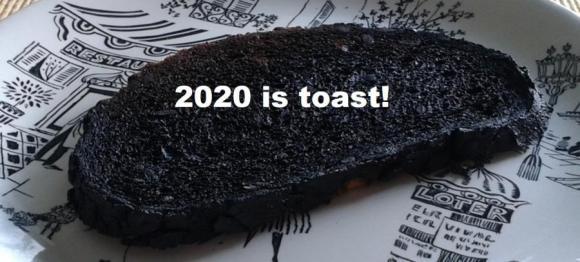
By Kathleen Draper, USBI Board Member and Chair of the International Biochar Initiative
Good riddance 2020! Though I am not sad to see 2020 ride off into the history books, upon reflection there were a few highlights within the US Biochar Industry that should not go unacknowledged. Here are five worth celebrating as they may well help the biochar industry scale quickly in the year to come.
#1 An explosion of biochar related webinars! For many years I have hosted biochar webinars for the International Biochar Initiative to fill a void in biochar education. This year that void was filled to overflowing from many different organizations hosting a wide variety of biochar presentations, forums and continuing education credit opportunities. Most of these webinars or forums recorded the presentations which are now available for free. Several worth watching include:
- The US Forest Service hosted a series of 8 webinars on a wide variety of topics including: what is it, production technologies, economics and several more. Mostly these were presented by US Forest Service employees that have been working with biochar for many years. (There were a few exceptions including one I gave on Innovative Products.)
- The Scaling Biochar Forum, held in mid-October, was a 2 day event aimed at educating investors and philanthropists about the growing number of opportunities and funding needs within the biochar industry.
- Cornell Cooperative Extension of Suffolk County hosted 4 webinars in November thanks to funding from SARE. Topics included: Biochar Basics, Science Behind Biochar, Ornamental Nursery Applications, and Landscape Applications of Biochar.
- Thermochemical Conversion & Biochar workshop hosted virtually by the Rochester Institute of Technology was aimed at educating New York State policymakers, farmers, investors and more. The full recording is here and an overview of the event found here.
- National Biochar Week – for 5 half days in December, biochar experts from around the country discussed many different applications and opportunities within the biochar industry. Recordings still being posted here.
#2. First US producers receive carbon removal credits – the long awaited opportunity to tap into finance from the voluntary carbon markets arrived in 2020 for US biochar producers. Pacific Biochar was the first commercial biochar producer to profit from a collaboration with Carbon Future. Carbo Culture, a pre-commercial biochar producer also based in California has also been approved to sell carbon removal credits through Puro, the first carbon market to acknowledge biochar on a carbon marketplace. Biochar credits are trading at significantly higher values than carbon offsets at least at this early stage. VERRA, a global leader in GHG reduction standards and methodologies, has also committed to developing and deploying a biochar GHG methodology in 2021.
#3. USDA NRCS Soil Carbon Amendment Protocol (Code 808) – The USDA Natural Resource Conservation Service developed a protocol focused on increasing soil carbon specifically through the use of compost, biochar or a combination of the two. To date 20 States have adopted Code 808 and funding is apparently available up to $845 per acre for farms that have soil carbon issues. [Most of the information on this is only available in PDFs, so Google NRCS code 808 to find out more or visit your local County USDA to find out if your State is participating.]
#4. Biochar allowed as a feed additive – but only in California so far! For years now the US Biochar industry has envied the European and other markets that have been able to sell high quality biochar as a livestock feed additive. Until quite recently that was not possible as the FDA had taken it off the approved list of feed amendments. In 2020 the California Department of Food & Agriculture approved the use of biochar (called charcoal in their regulations) in livestock feed. The Official California Code of Regulations for Food and Agriculture related to commercial feed states the following: (e) Charcoal (vegetable) is charred hard or soft wood, nut shells, or fruit pits. If it is wood charcoal, it shall bear a designation indicating whether it is hard wood charcoal or soft wood charcoal. Charcoal from nut shells or fruit pits shall be designated as shell charcoal. When used in a mixed feed the maximum percent shall be stated on the label. (Barclay’s Official California Code of Regulations)
#5. Biochar Policy Task Force for the Biden Transition Team – As Americans breathe a sigh of relief that the incoming administration understands, supports and ‘believes’ in science and climate change, the winds of policy change for the biochar industry began to formulate last month. The Biden Transition Team formed a bioenergy/biochar task force made up of a few biochar experts as well as policy wonks from many of the large US crop growers associations. They learned from various biochar academic and industry folk about the potential for US farmers and strategized about ways to help the industry scale quickly in 2021. Even just having this kind of dialogue signals a complete shift from the out-going administration.
One other anecdotal impact heard from various biochar industry players was that many folks around the world began to garden as a safe way to get out of the house and to feel more resilient. This created increased demand for the biochar industry in many parts of the world!
So, while 2020 seemed filled with doom, gloom and way too much Zoom, I hope you will agree that good things happened within the biochar world which laid a solid foundation for more to come in 2021.
Side note: I often use a picture of burned toast to describe the difference between torrefaction (regular toast) and pyrolysis (burned toast). It seems like a good visual to show why microbes prefer to leave it alone thereby allowing for long term sequestration versus decomposition.